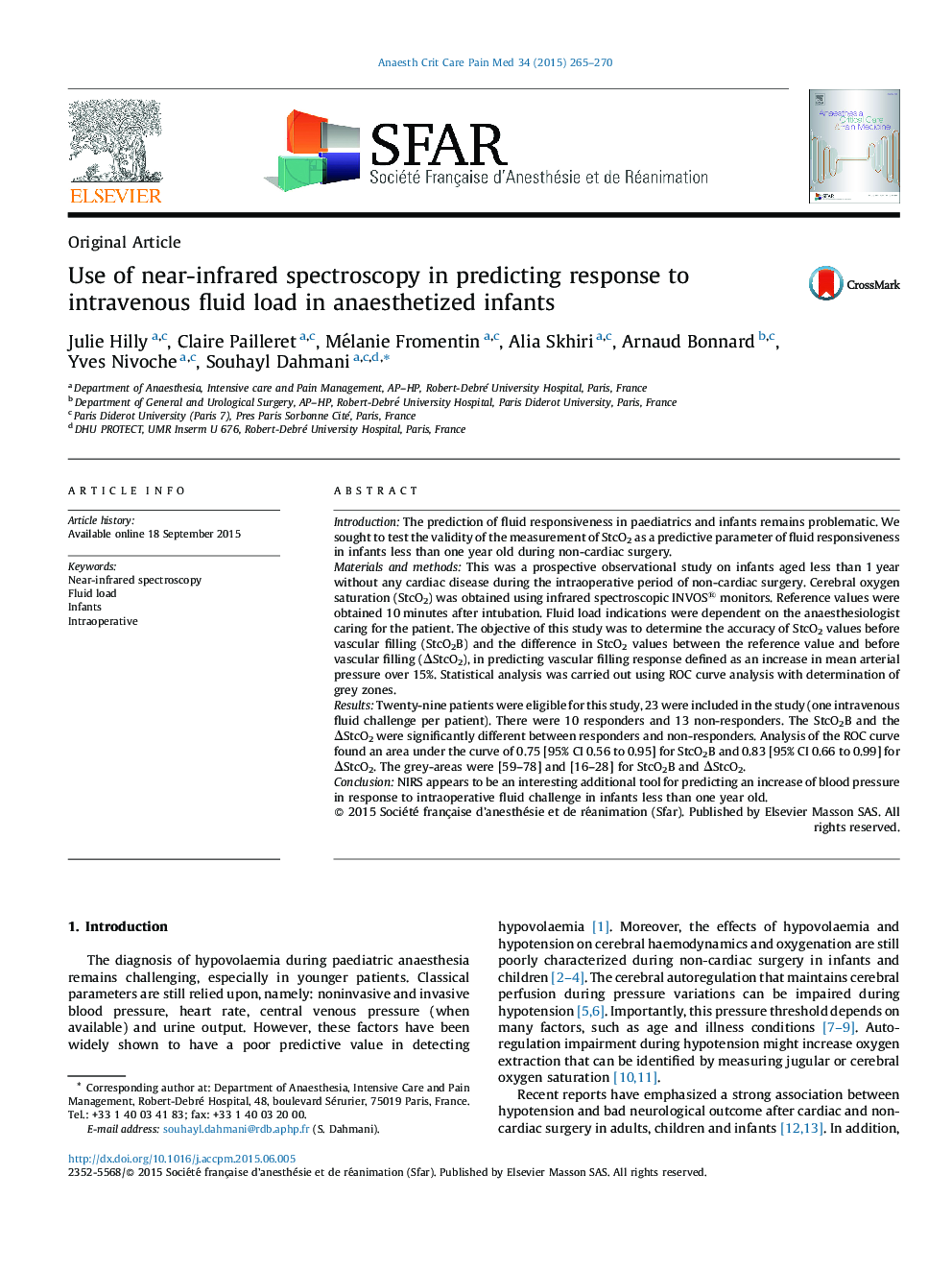| Article ID | Journal | Published Year | Pages | File Type |
|---|---|---|---|---|
| 2741907 | Anaesthesia Critical Care & Pain Medicine | 2015 | 6 Pages |
IntroductionThe prediction of fluid responsiveness in paediatrics and infants remains problematic. We sought to test the validity of the measurement of StcO2 as a predictive parameter of fluid responsiveness in infants less than one year old during non-cardiac surgery.Materials and methodsThis was a prospective observational study on infants aged less than 1 year without any cardiac disease during the intraoperative period of non-cardiac surgery. Cerebral oxygen saturation (StcO2) was obtained using infrared spectroscopic INVOS® monitors. Reference values were obtained 10 minutes after intubation. Fluid load indications were dependent on the anaesthesiologist caring for the patient. The objective of this study was to determine the accuracy of StcO2 values before vascular filling (StcO2B) and the difference in StcO2 values between the reference value and before vascular filling (ΔStcO2), in predicting vascular filling response defined as an increase in mean arterial pressure over 15%. Statistical analysis was carried out using ROC curve analysis with determination of grey zones.ResultsTwenty-nine patients were eligible for this study, 23 were included in the study (one intravenous fluid challenge per patient). There were 10 responders and 13 non-responders. The StcO2B and the ΔStcO2 were significantly different between responders and non-responders. Analysis of the ROC curve found an area under the curve of 0.75 [95% CI 0.56 to 0.95] for StcO2B and 0.83 [95% CI 0.66 to 0.99] for ΔStcO2. The grey-areas were [59–78] and [16–28] for StcO2B and ΔStcO2.ConclusionNIRS appears to be an interesting additional tool for predicting an increase of blood pressure in response to intraoperative fluid challenge in infants less than one year old.
